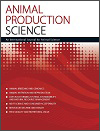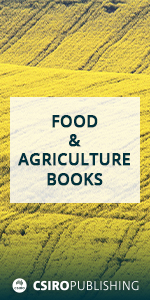This study evaluated the impact of corn ethanol byproducts on feed intake, digestion, and growth performance in young Nellore bulls. Replacing conventional ingredients with 30% dry distillers grains plus solubles (DDGS) promoted a 27% increase in dietary protein, promoting a higher weight gain and feed efficiency than control diets. Corn ethanol byproducts can replace conventional protein and energy sources. The inclusion of corn ethanol byproducts promoted an increase in overall performance, making them a sustainable feed option for beef production.

Animal Production Science
Volume 65 Number 11 2025
The government of Nepal has enlisted leptospirosis as one of the prioritized zoonotic diseases of Nepal. This study investigated the seroprevalence of Leptospira interrogans serovar Hardjo infection among cattle in Tanahun district, Nepal, along with identifying the associated risk factors at herd and animal level, by using an indirect antibody ELISA. Farmers and general public, especially in high-risk areas of Tanahun district, should be made aware of this zoonosis. Findings could assist in developing control and contingency plans for the management of this disease.
This article belongs to the collection: Sustainable Animal Agriculture for Developing Countries 2023.
AN24101 Abstract | AN24101 Full Text | AN24101PDF (696 KB) Open Access Article
AN24375The influence of concentrate supplementation during the dry and rainy seasons on performance of young Nellore bulls grazing tropical grass pastures
 , Kaliandra Souza Alves, Luis Rennan Sampaio de Oliveira, Jenifer Maira Lima Ramos, Rafael Mezzomo and Daiany Iris Gomes
, Kaliandra Souza Alves, Luis Rennan Sampaio de Oliveira, Jenifer Maira Lima Ramos, Rafael Mezzomo and Daiany Iris Gomes 
When animal growth is delayed by some pasture limitation, lower performance is detected, which negatively affects slaughtering age or carcass weight. Thus, the animals supplemented with concentrate during both seasons have greater body weight, total ADG, carcass weights and a higher proportion of fat in the carcass than do animals receiving supplemental concentrate in just one of the seasons.
Weaner lambs with lighter weights and those losing weight are at risk of mortality. This study compared the behaviour and performance of the lightest 25% of Merino weaners when pen-fed for slow growth separately or in mixed-weight groups, but lighter lambs grew at the same rate as did heavy lambs in Mixed pens. Separate feeding of lighter lambs was not needed to maintain slow growth, but did reduce bullying in the first week of feeding.
AN25036 Abstract | AN25036 Full Text | AN25036PDF (394 KB) Open Access Article
Little research explores the effects of early-life experiences on the experiences of dairy heifers in their first lactation. This study reared heifers according to one of three early-life treatments, varying in social and environmental complexity, then explored their effects on several outcome indices, including milk yield and milk cortisol concentrations in the first month of lactation. Early-life treatment did not appear to influence these measures in the present experiment, but the data collected indicate that early lactation is stressful for primiparous heifers.
AN24333 Abstract | AN24333 Full Text | AN24333PDF (817 KB) | AN24333Supplementary Material (559 KB) Open Access Article
Progesterone has several applications in the reproductive management of domestic animals, such as estrus synchronization, prevention of early embryonic death, and treatment of some ovarian disorders. In the present study, three doses of slow-release progesterone (a medicine with easy use and no side effects) were used to determine the dose that provides an appropriate blood progesterone concentration for a suitable period of time. On the basis of these results, the 100 mg dose was better than were lower doses.
Heat stress and limited food availability are growing challenges for livestock, especially in hotter regions. This study found that when fat-tail Barbarine ewe lambs were underfed in extreme heat, their growth slowed and their reproductive performance was negatively impacted. These findings highlight the need for better feeding and management strategies to help animals adapt to changing climates, ensuring the sustainability of livestock farming in arid and semi-arid areas.
Respiratory disease is common in sheep globally. The ovine respiratory complex (ORC) is a polymicrobial disease of lambs and adult sheep associated with bacterial, mycoplasmal and/or viral infection, exacerbated by a range of host and environmental factors. This review discusses the role of Mycoplasma (Mesomycoplasma) ovipneumoniae, which was first isolated from sheep flocks in Queensland, Australia more than 50 years ago, in ORC with an emphasis on extensive Australian sheep farming systems.



